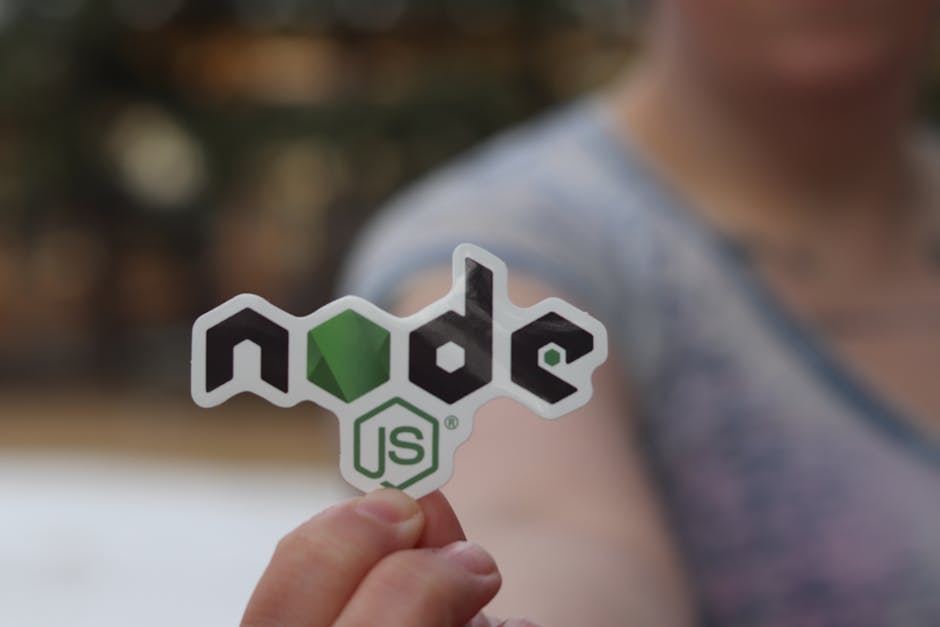Is Shuffler the Ultimate Open Source Workflow Orchestrator?
In today’s fast-paced digital landscape, security and IT teams are constantly bombarded with alerts, repetitive tasks, and complex processes. Imagine a tool that can seamlessly connect your existing security tools, automate responses to incidents, and streamline your IT workflows. Enter Shuffler, an open-source, general-purpose workflow orchestration platform poised to revolutionize how security and IT professionals manage their daily operations. Is it the ultimate solution? Let’s dive in and explore its capabilities.
Overview: Shuffler’s Power Unleashed

Shuffler is designed to be a flexible and powerful workflow orchestration platform. Its core strength lies in its ability to integrate with a wide range of security and IT tools, allowing you to create automated workflows that respond to events in real-time. Think of it as a central nervous system for your security and IT infrastructure. Shuffler allows you to chain together different actions from different tools, automating repetitive tasks such as threat investigation, incident response, and vulnerability management.
The genius of Shuffler lies in its visual workflow editor. Instead of writing complex code, users can drag-and-drop actions and connect them to create custom workflows. This low-code approach makes Shuffler accessible to users of all skill levels, from security analysts to IT administrators. Furthermore, Shuffler is open-source, meaning it’s community-driven, transparent, and constantly evolving to meet the changing needs of the security and IT landscape. Its open nature also reduces vendor lock-in, giving you greater control over your data and workflows.
Installation: Setting Up Your Shuffler Environment

Installing Shuffler can be done through various methods, including Docker, Kubernetes, and manual installation. The recommended approach for most users is using Docker, as it simplifies the setup process and ensures consistency across different environments. Here’s a step-by-step guide to installing Shuffler with Docker:
- Prerequisites: Ensure you have Docker and Docker Compose installed on your system. You can find instructions on how to install them on the official Docker website.
-
Download the Shuffler Docker Compose file: You can obtain the Docker Compose file from the official Shuffler GitHub repository. Use the following command to clone the repository:
git clone https://github.com/shuffler/shuffler.git -
Navigate to the Shuffler directory:
cd shuffler -
Start Shuffler using Docker Compose:
docker-compose up -dThis command will download the necessary images and start the Shuffler containers in detached mode (-d).
-
Access the Shuffler web interface: Once the containers are running, you can access the Shuffler web interface by navigating to
http://localhost:8000in your web browser. (Note: If you’re running Docker on a remote server, replacelocalhostwith the server’s IP address or domain name.) - Initial Setup: When you access the web interface for the first time, you will be prompted to create an administrator account. Follow the on-screen instructions to complete the initial setup.
Alternative Installation (using Docker directly):
While Docker Compose is preferred, you can also install Shuffler using Docker directly. This involves pulling the Shuffler image and running it with the necessary environment variables and port mappings. Here’s an example:
docker run -d \
-p 8000:8000 \
-e SHUFFLER_DATABASE_URL="postgresql://user:password@host:port/database" \
shuffler/shuffler
Important: Replace user:password@host:port/database with your actual PostgreSQL database credentials. You will also need to create the database beforehand.
Usage: Automating Your Security Workflows

Now that Shuffler is installed, let’s explore how to use it to automate a common security task: Threat Intelligence Enrichment. This workflow will take an IP address as input, query a threat intelligence feed (e.g., VirusTotal), and report any malicious associations.
- Create a new workflow: In the Shuffler web interface, click on “Workflows” and then “Create Workflow.” Give your workflow a meaningful name (e.g., “Threat Intelligence Enrichment”) and a description.
- Add an Input Node: Drag an “Input” node from the sidebar onto the workflow canvas. Configure the Input node to accept an IP address as input. You can define the input type as “IP Address” for validation.
- Add a VirusTotal Action: Search for “VirusTotal” in the action library and drag the “IP Address Report” action onto the canvas. Connect the output of the Input node to the input of the VirusTotal action. You will need to configure the VirusTotal action with your VirusTotal API key.
- Add a Conditional Logic Node: Drag a “Conditional Logic” node onto the canvas. Connect the output of the VirusTotal action to the input of the Conditional Logic node. Configure the Conditional Logic node to check if the VirusTotal report indicates that the IP address is malicious (e.g., based on the “reputation” score).
- Add a Notification Action: Drag a “Notification” action (e.g., “Email,” “Slack,” or “HTTP Request”) onto the canvas. Connect the “True” output of the Conditional Logic node to the input of the Notification action. Configure the Notification action to send an alert to the security team if the IP address is deemed malicious.
- Add a Logging Action (Optional): Drag a “Logging” action to the canvas and connect the output of the VirusTotal action to it. Configure it to log the entire VirusTotal report. This is useful for auditing and future analysis.
- Test the workflow: Click on the “Run” button and provide an IP address as input. Observe the workflow execution and verify that the notification is sent if the IP address is malicious.
Code Example (Python – Emulating a Shuffler Action):
While Shuffler uses a visual editor, understanding the underlying code is helpful. Here’s a simplified Python example of what a VirusTotal action might look like:
import requests
import json
def get_virustotal_report(ip_address, api_key):
"""
Queries the VirusTotal API for an IP address report.
"""
url = f"https://www.virustotal.com/api/v3/ip_addresses/{ip_address}"
headers = {"x-apikey": api_key}
try:
response = requests.get(url, headers=headers)
response.raise_for_status() # Raise HTTPError for bad responses (4xx or 5xx)
data = response.json()
return data
except requests.exceptions.RequestException as e:
print(f"Error querying VirusTotal: {e}")
return None
def is_malicious(report):
"""
Checks if the VirusTotal report indicates the IP address is malicious.
"""
if report and "data" in report and "attributes" in report["data"] and "last_analysis_stats" in report["data"]["attributes"]:
stats = report["data"]["attributes"]["last_analysis_stats"]
if stats["malicious"] > 0 or stats["suspicious"] > 0:
return True
return False
# Example usage:
api_key = "YOUR_VIRUSTOTAL_API_KEY" # Replace with your actual API key
ip_address = "8.8.8.8"
report = get_virustotal_report(ip_address, api_key)
if report:
if is_malicious(report):
print(f"IP address {ip_address} is potentially malicious!")
else:
print(f"IP address {ip_address} appears to be clean.")
else:
print("Failed to retrieve VirusTotal report.")
Important: Replace YOUR_VIRUSTOTAL_API_KEY with your actual VirusTotal API key. This is a simplified example and doesn’t include error handling or rate limiting.
Tips & Best Practices: Maximizing Shuffler’s Potential
- Start small: Begin by automating simple, repetitive tasks and gradually build more complex workflows as you become more comfortable with Shuffler.
- Leverage existing actions: Explore the Shuffler action library to see if there are pre-built actions that can be used in your workflows.
- Create reusable sub-workflows: If you have workflows that are used in multiple scenarios, consider creating sub-workflows that can be called from other workflows. This promotes modularity and reduces redundancy.
- Implement proper error handling: Use the “Error Handling” nodes to gracefully handle errors that may occur during workflow execution. This ensures that your workflows are resilient and don’t fail unexpectedly.
- Secure your API keys: Store your API keys securely using Shuffler’s built-in credential management system. Avoid hardcoding API keys directly into your workflows.
- Document your workflows: Add detailed descriptions to your workflows and actions to explain their purpose and functionality. This will make it easier to maintain and troubleshoot your workflows in the future.
- Use Version Control: Treat your Shuffler workflows as code. Use Git or other version control systems to track changes, collaborate effectively, and revert to previous versions if necessary. This is especially useful in team environments.
Troubleshooting & Common Issues
- Connection errors: If you’re experiencing connection errors when using Shuffler, ensure that your network configuration is correct and that the necessary ports are open. Check the Shuffler logs for more detailed error messages.
- API key issues: Double-check that your API keys are valid and that you have the correct permissions to access the resources you’re trying to access. Ensure the API key is correctly entered into the Shuffler action configuration.
- Workflow execution errors: If a workflow fails to execute, examine the Shuffler logs to identify the cause of the error. Pay attention to error messages and stack traces.
- Database connection issues: If Shuffler is unable to connect to the database, verify that the database server is running and that the database credentials are correct.
- Version incompatibility: Sometimes actions are designed for specific versions of Shuffler. If an action doesn’t work, verify its compatibility. Updating Shuffler to the latest version is often the solution.
FAQ: Your Shuffler Questions Answered
- Q: What types of workflows can I automate with Shuffler?
- A: Shuffler is a general-purpose workflow orchestration platform, so you can automate a wide range of security and IT tasks, including threat investigation, incident response, vulnerability management, and compliance reporting.
- Q: Does Shuffler support multi-tenancy?
- A: The level of multi-tenancy support in Shuffler depends on the configuration and deployment. Review the official documentation for details on configuring multi-tenancy.
- Q: Is Shuffler suitable for small businesses?
- A: Yes, Shuffler can be used by businesses of all sizes. Its low-code approach and open-source nature make it accessible to organizations with limited resources.
- Q: What kind of support is available for Shuffler?
- A: As an open-source project, Shuffler primarily relies on community support. You can find help on the Shuffler GitHub repository, forums, and other online communities. Commercial support options may also be available from third-party vendors.
- Q: Can I integrate Shuffler with my existing SIEM?
- A: Yes, Shuffler can be integrated with many popular SIEM (Security Information and Event Management) solutions. Look for existing actions or develop custom integrations to forward alerts and events from your SIEM to Shuffler.
Conclusion: Embrace the Power of Automation with Shuffler
Shuffler offers a powerful and flexible solution for automating security and IT workflows. Its visual workflow editor, extensive action library, and open-source nature make it a valuable tool for organizations of all sizes. By embracing automation, you can streamline your operations, improve efficiency, and free up your team to focus on more strategic initiatives. Ready to take control of your security and IT workflows? Visit the official Shuffler GitHub repository to learn more and start automating today! Contribute to the project, share your workflows, and help the Shuffler community grow.

